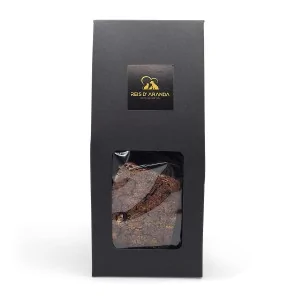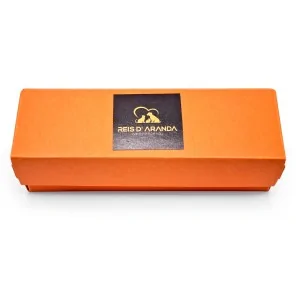Its name says it all: the Vienna blue rabbit comes from Austria. Not only is it beautiful with its shiny blue-grey...
WHAT IS DESENSITISATION OF AN ANIMAL?
INTRODUCTION
It is not the first or the last time that we have heard ‘what can I do so that my rabbit is not afraid of me’, ‘what can I do so that my dog is not afraid of the noises in the house’, ‘my guinea pig gets scared when I pick it up’....
And then, when we go to a pet fair (dogs, cats, rabbits...) we see that these animals are totally calm: they eat, drink, sleep and groom themselves without anything seeming to disturb them (especially small animals), is it magic? If there are lots of people and noise! No, this is called desensitisation and it is one of the best things a responsible breeder can do.
WHAT IS DESENSITISATION?
The RAE defines it as follows (and it couldn't be more accurate): Behaviour modification technique consisting of eliminating anxious responses to phobic stimuli or situations, through progressive or massive exposure to them. It is assumed that the organism gradually becomes habituated to the phobic stimulus or exhausts all fear of it after total and sudden exposure.
This is basically the same thing: to carry out a gradual process of behaviour modification in an animal so that it loses its fear of situations that it will experience on a day-to-day basis.
HOW IS DESENSITISATION OF AN ANIMAL DONE?
Animals can have (just like humans) a certain predisposition to react negatively to unfamiliar noises and situations or situations that are directly related to negative situations: mistreatment (fear of one sex or another being very common), pain (someone touched them in a place that hurt them a lot or a noise was associated with that pain)...
One of the main tasks of a responsible breeder is, precisely, to carry out a good desensitisation process before the delivery of the animal; this is done so that the process of adaptation and socialisation of the animal is as easy as possible, to prevent health problems associated with stress and to make the owner's life easier. Many owners do not know how to correctly deal with their animals' phobias or fears and may unintentionally increase them and are wary of going to an ethologist (behaviourist) because they do not have one in their area or the price is out of their hands.
How is the desensitisation process of an animal carried out?
We are going to focus on dogs, cats, rabbits and rats because their growth is quite similar in certain physical characteristics (they are born blind and deaf and, in the case of rabbits and rats, hairless), while guinea pigs are born much more evolved (they see, hear, walk and are almost independent).
The first thing is that the mother trusts us, the offspring take a lot of notice of the behaviour of their mother and siblings and, leaving aside that many behavioural problems are inherited from the mother genetically, if the mother is an animal that shies away from us, is frightened by noises or panics, the offspring will learn that these situations, other animals or people are ‘dangerous’, which will result in fearful animals by ‘contagion’. If the mother allows us to sit next to her or sleep with her in the kennel, if she does not show signs of aggression when taking her pups or panic in the presence of other animals that can see them (without contact), the pups will understand that the things they are seeing or hearing are normal. Nor should we confuse protective sentiment (attacking to protect the litter) with aggression or fear, this is something that sometimes happens in the first few days but is solved spontaneously when the pups are about a week old; we should only breed with sociable animals that allow us to handle the pups correctly (taking into account their selection and standard, in the case of dogs and cats).
As we have said, these animals are born blind and deaf, so how do we desensitise them if they can neither see nor hear us: by smell and touch.
These two are the main senses at this stage of life (between day 0 and the twelfth day of life, approximately) and we must take advantage of them to begin desensitisation.
1- TOUCH AND SMELL: It is essential to caress, handle gently and introduce different smells to the pups before they open their eyes or ears, why? Because they are guided by them and if they smell our scent or that of other animals (dogs, cats...; without coming into contact with them, just that they notice their scent), and subsequently receive lots of caresses and cuddles, they will relate that these smells mean pleasant things: caresses, affection and security.
2- OPENING OF THE EARS: When the ears of these animals begin to open it is very important to introduce them to different sounds gradually through recordings: classical music, traffic sounds, storms, rockets, dogs barking... The pups are calm in the nest or the nursery, they sleep and their mother does not react negatively because she knows that ‘nothing is happening’, so they normalise these sounds, which increase in intensity until they reach ‘normal’ levels in a house.
3- EYE OPENING: This is the final process: they discover what it is that they have always smelt or heard, they approach without fear, they ask for caresses?
They are sociable and affectionate infant animals that will now learn to let themselves be handled: you touch their paws, their mouth, their genitals...
This procedure continues until weaning and then it is the owner's job to continue with it through good management and following the breeder's advice so as not to spoil all the previous work.
BENEFITS OF DESENSITISATION
What are the benefits of early desensitisation?
- Easier weaning
- Faster adaptation to their new home
- Stronger immune system
- Better stress tolerance
- Prevention of phobias
- Much higher tolerance to noise and everyday situations
- Less likely to develop parasites or stress-related diseases (coccidia, E.Cuni or mites)
- Greater sociability with people and other animals
- much less chance of developing intestinal paralysis (rabbits and guinea pigs)
- easier and quicker handling in the veterinary clinic
DESENSITISATION AND FAMILY HUSBANDRY
Early desensitisation is only carried out in family breeding. This procedure is not carried out in any multi-breeding or macro pet farm, as the large number of litters and animals that can be found in them allows for individual dedication to each of them.
Animals that have not received this treatment are not only more prone to suffer from stress or unfounded fears, but the centre itself cannot advise the owner on how to educate his animal or react to these behavioural problems.
CONCLUSION
Desensitisation is an essential practice when raising an animal. This process is not only very beneficial for the puppy but also for its owners (especially if they are first-time owners).
Leave a comment
Log in to post comments
















